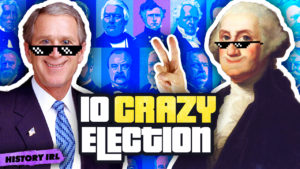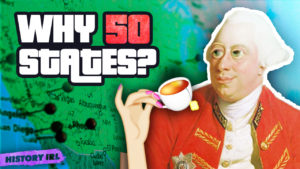Why the US is and Not One Country
When the United States was founded, different states or areas of the US had different cultures based on their colony, making it harder for all their interests to be consolidated. Plus, factoring in the sheer landmass and diversity of the demographic, the founding fathers decided to split the powers of the government between the individual states and the federal government. The end result was 13 defined states under one flag.
During the Colonial Period of the 17th to 18th Century, the Thirteen Colonies were, to an extent, kind of self-governing in the sense that they had active local elections, although the governor of each colony was appointed by the king, and there wasn’t much representation from the colonists to their king or parliament either. Despite their half-baked independence, the colonies were still colonies of the English Crown, thus their economy was tightly woven with a system called mercantilism where the central government all the way back in Britain, had the power to administer the possessions of the colonies for their benefit. What that meant is that whatever the colonies produced, the central government essentially owned and they could do whatever the heck they wanted. They could even take exports under the guise of “buying” it from the colonies and then sell the product back at a steeper price, making it immensely harder for colonists to have access to the things they themselves made and broke their backs to produce.
The form of government that the US adapted after the war is a federal government which basically means that the governing powers bestowed upon the central government are passed onto the local government, allowing the states more freedom to govern their own set of people, with their own government, in their own territory, where they can relate with other states. This is crucial because as we’ve talked about before, the Thirteen Colonies were all established based on very different purposes. Some exported different things, some had very different cultural belief systems than other colonies, so what we have essentially is a very large country with a very diverse set of people now. The more logical way to go about managing these differences while still maintaining unity is by establishing a federal government that allows the states to govern within their customs and beliefs while still uniting all of these states under one flag: The United States of America.
And unsurprisingly, it didn’t! The first constitution, called the Articles of Confederation, gave the individuals states the sweeping majority of the power and left the federal government with very little power and few resources, essentially making it useless. The central government didn’t have the power to make or enforce sweeping laws and couldn’t raise enough money to pay down federal debts accumulated during the revolution. No surprise here, it failed and was replaced by the original draft of the constitution we know today. Over the past 240 plus years, there have been 27 amendments or changes made, clarifying rights and protecting minority communities. This new constitution gave the federal government exponentially more power, allowing them to collect taxes, create national laws and regulations, and established a three-branch system consisting of a legislative branch aka Congress who would make laws, executive branch aka the President who would confirm them, and then a judicial branch aka federal courts like the supreme court that would interpret laws.
Host: Timo Bach – Research/writer: Lyka Naranjo – Video Editor: Isaiah John Jornales







